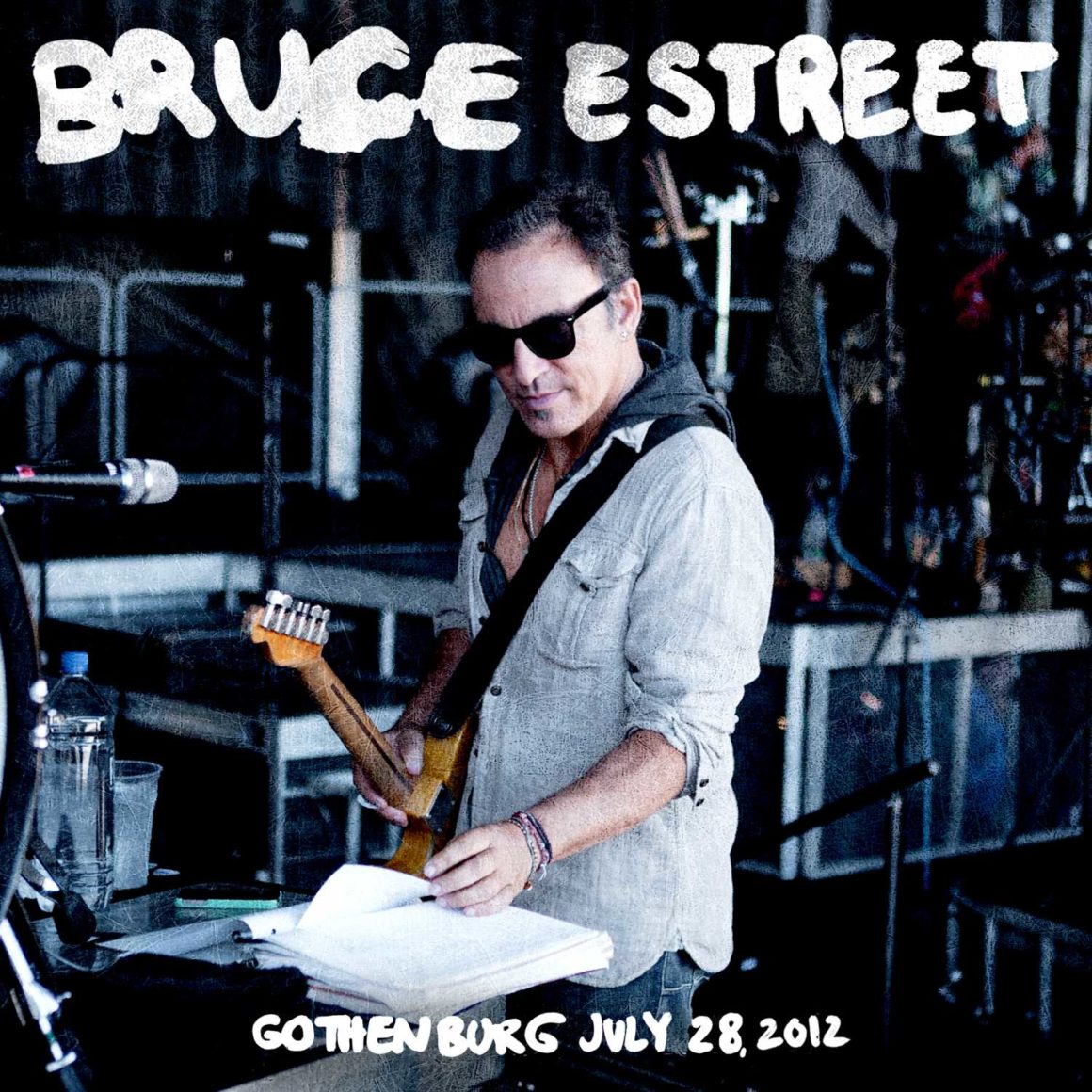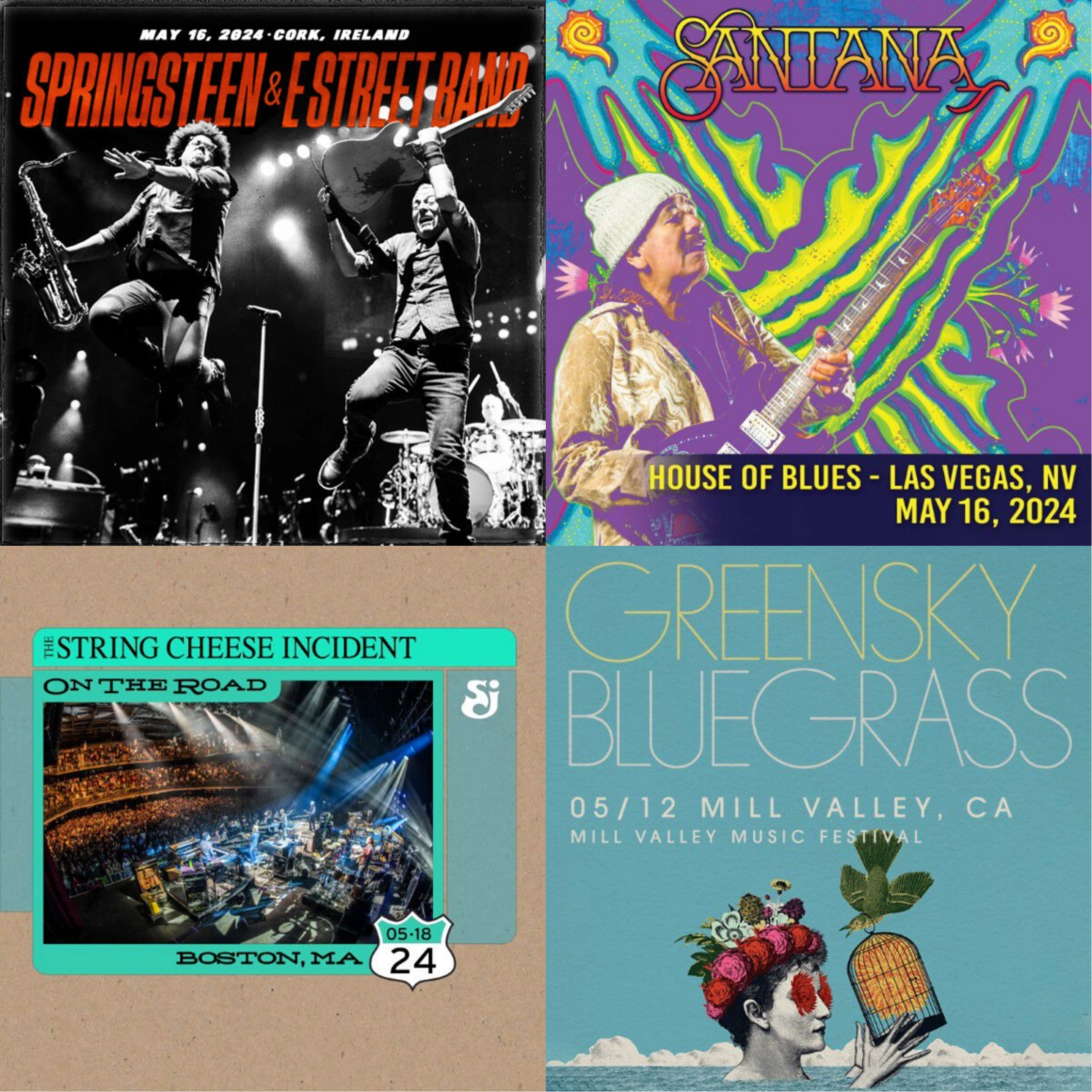Tonight I Wanna Feel The Beat Of The Crowd

Bruce Springsteen and the E Street Band
Gothenburg, Sweden – July 28, 2012
By Erik Flannigan
If there was ever a time to appreciate archival live recordings, that time is now.
Many years ago, I heard the brilliantly talented and famously cantankerous guitarist Robert Fripp of King Crimson posit a provocative position on the subject of live recordings. “Of the many, many performances [I’ve seen] over four decades,” he told an audience at SXSW in Austin, “I have [never] left and felt I wished to have it on tape. There was nothing in my experience of any of [those] events which were other than available to my experience. And if I wasn’t there, I missed it. And if I missed it, photographs, recordings, nothing could bring this back to me.”
Au contraire mon frère.
The core idea Fripp articulates is undeniably true: Nothing can fully replace or replicate being at a concert in person, as it happens. But let’s not throw the baby out with the bathwater. Archival live recordings are, as Ma Bell used to say, “the next best thing to being there.” (For those too young to remember, that’s what AT&T was affectionately called when it was a national telecom monopoly.)
As undeniably magical as live concerts can be, they are by nature fleeting, real-time experiences. Yes, they live on in our memories, but what’s the larger cultural value of these unique performances? When the technology was invented in the 1870s to record and preserve audio, after the spoken word, the earliest recordings captured on those cylinders were of musicians performing live. Preserving performances is arguably the fundamental underlying purpose of recording technology.
Hearing a show you attended can stir memories back to life. Amazing as that is, live recordings even allow time travel and can place us at the Tower Theater in 1975, the Roxy in 1978 or Wembley Arena in 1981 when we couldn’t have possibly been there any other way. Is it the same as having had Bruce stand on your cocktail table during the middle of “Spirit in the Night?” No, but close your eyes, let your imagination flow, and it is awfully close.
Gothenburg 7/28/12 allows fans who weren’t there at Ullevi to travel through time and space to hear one of the best nights on the Wrecking Ball tour in a closing run of European concerts that was, to quote Stevie Van Zandt’s predictive tweet before the show, “one for the ages.”
There’s something about rainy shows that brings out the best in Bruce and the band. The show opener, a cover of Creedence’s “Who’ll Stop the Rain?” is a bellwether for great things to come, with crunchy guitar leading the way. Fan-band bonds are solidified through sparkling takes of “The Ties That Bind” and “Out in the Street” (with extra long intro) before we move to the less-traveled corners of Born in the U.S.A. with an excellent “doubleheader” of “Downbound Train” and “I’m Goin’ Down.” The former extends the guitar-richness of the show’s opening salvo and benefits from the heft of the horn section; the latter restores a bit of often-missing edge to the self-deprecating tale.
The aforementioned guitar tone extends seamlessly into a sharp “My Lucky Day” in one of only four Wrecking Ball tour performances. Special nights are built on special songs, and Gothenburg has particularly juicy ones.
What is it about “Lost in the Flood?” Bruce and the band can let it lie dormant for ages, then nail it as they did in NYC 2000. “Flood” had gone unplayed for three years prior to Gothenburg, wasn’t soundchecked, yet the mighty E Street Band is more than up to the task. “In the key of E minor,” says Bruce, “then we’re gonna hit the big chord.” Do they ever. The big chord that follows Roy’s prelude smashes forth an electrifying version that sounds as vital and fresh as it did four decades prior. Bruce vocals are especially gritty, evidenced by this not-so-subtle lyric change: “Hey man, did you see that? Those poor cats were sure fucked up.” Damn.
The energy generated by “Lost in the Flood” propels the ensuing three-pack from Wrecking Ball (“We Take Care of Our Own,” “Wrecking Ball,” “Death to My Hometown”) plus kindred spirit “My CIty of Ruins.” Pick your cliche—firing on all cylinders, in the zone, killing it—all would apply, and doesn’t the horn section sound fantastic? Despite the stadium scale of the show, Jon Altschiller’s mix is tight and close, with Roy’s piano and Max’s high-hat in particularly sharp focus.
“Frankie.” Merely typing the song title brings a smile. The marvelous, lost-and-found Springsteen original premiered on the Spring 1976 tour, his first new song after the release of Born to Run. It was performed around a dozen times that year and cut for Darkness a year later (despite Bruce’s introduction saying The River). It was recorded again for Born in the U.S.A. in 1982, and that version was eventually released on Tracks in 1998.
The song’s live outings in modern times are equally limited. One-off attempts in 1999 and 2003 showed “Frankie” deceptively tricky to get right; something about the song’s lilting quality and mid-tempo pacing proved elusive. But after working through the arrangement in soundcheck, Bruce unlocks the wondrous heart of “Frankie” and lets it wash over Gothenburg in a spellbinding performance.
The show’s second act begins with slightly off-kilter take of “The River,” though normal service is restored in a crisp “Because the Night” and on through “Lonesome Day,” “Hungry Heart,” “Shackled and Drawn,” and “Waitin’ on a Sunny Day.” We step back into special-show territory with another great pick from Tracks, the rollicking River outtake “Where the Bands Are” dedicated to the fans who had traveled from show to show around Europe. It is the last performance to date of the irresistible track.
Sure, special songs help make special nights, but Gothenburg is more than its rarities. The performance of “Backstreets” shines as a particular standout, taking its time and accented with vocal nuances that don’t occur in every outing. I don’t think Bruce can sing it any better in this century. Boom, “Badlands” kicks in, and the show runs through the end of the main set via “Land of Hope and Dreams” and the band-spotlighting “People Get Ready” outro.
The encore might best be described as one of release. Start with Bruce’s final vocal line in “Thunder Road,” as he wavers for effect on “we’re pulling out of here to wiiiiiiin.” The contrast of “Thunder Road” into “Born in the U.S.A.” is compelling “40 years down the road” with the horns adding anthemic overtones to the song’s conclusion. The energy stays high for “Born to Run,” “Ramrod,” “Dancing in the Dark,” and “Tenth Avenue Freeze-out” before we reach the emotional apex of the night: The return of “Jungleland.”
“Clarence was a special part of Sweden,” Bruce tells the crowd. “So tonight, we haven’t done this one in a long time, and we haven’t practiced it. This is for the Big Man and for you for giving him a home for quite a few years.”
Roy and Soozie kick it off a la Main Point ‘75. The band turns the burners to high. Steve’s guitar solo is on point. As we arrive at The Moment, Bruce’s vocals are passionate, stretching out “Just one look and a whisper, they’re gaw-aw-one” before Jake Clemons hits that transcendent note. Having never listened to fan recordings of the show, I didn’t know what to expect from this resurrection, but Jake, Bruce, and the band really deliver. That first note of the solo might bring a tear to your eye, and when Jake’s spotlight ends, you hear the appreciation and recognition of what just transpired from the audience.
How does one follow up such a moment? The only way Bruce knows how, with “Twist and Shout.” Nothing can follow that, yet even after 12 minutes the audience is still “whoa, whoaing” the melody to “Badlands.” No wonder these Euro 2012 shows were so long: the audiences, Bruce, and the band just didn’t want it to end.




